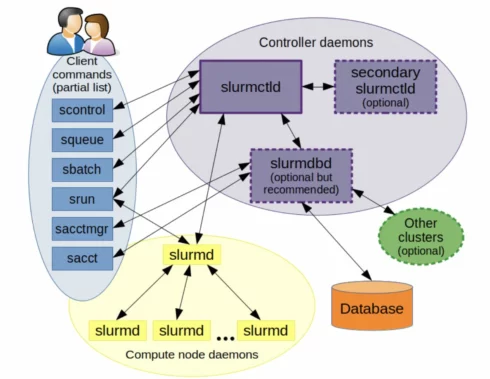
In the early years of High-Performance Computing (HPC), managing workloads across a cluster of machines was largely a manual effort. Users had to log into specific nodes, assign jobs by hand, and often write custom scripts to keep track of resources. While this approach was manageable in small labs with a handful of machines, it quickly fell apart as clusters grew larger.
Without a central scheduler, resources were frequently wasted. Some machines sat idle while others were overloaded. Users often clashed with each other when two jobs attempted to run on the same node, creating conflicts that were difficult to resolve. Scaling up to hundreds or thousands of nodes became unmanageable, and administrators faced a constant struggle to balance fairness, efficiency, and user demands.
The lack of an automated, reliable system for workload management meant that valuable compute resources were underutilized, and researchers spent as much time managing infrastructure as they did running experiments. This gap created the need for a tool that could bring order, fairness, and scalability to cluster computing.
Slurm as a Game-Changer
Slurm, short for Simple Linux Utility for Resource Management, emerged to address these challenges. Its central innovation was to separate the user from the complexity of the underlying hardware. Instead of worrying about which node to run a task on, users simply submitted jobs, and Slurm took responsibility for scheduling and execution.
This approach fundamentally changed how HPC environments operated. Slurm introduced centralized scheduling, where a controller decides which jobs run and when, based on available resources and predefined policies. By managing queues, Slurm prevented conflicts between users and ensured that workloads were distributed fairly across the cluster.
Slurm also offered flexibility that previous systems lacked. It could handle batch processing for large jobs, interactive sessions for testing, and even tightly coupled parallel workloads that required multiple nodes at once. Its design made it possible to scale up from small research clusters to some of the largest supercomputers in the world.
In short, Slurm transformed cluster management from a chaotic, manual process into an automated system. It gave administrators control, gave users a fair and transparent environment, and unlocked the potential to fully utilize expensive computing infrastructure.
Why Slurm Still Matters Today
Even as the computing landscape shifts toward cloud-native technologies, containers, and Kubernetes, Slurm remains highly relevant. Its core strengths are efficient scheduling, scalability, and fairness are just as valuable today as when it was first adopted in HPC. Clusters continue to be expensive, and Slurm ensures that every node and every GPU is used as effectively as possible, minimizing idle time and maximizing throughput.
Fairness is another critical advantage. In shared environments where multiple teams compete for resources, Slurm enforces scheduling policies that balance access. This prevents any single user from monopolizing the system and maintains transparency about how jobs are prioritized. These features build trust and collaboration in multi-user research or enterprise environments.
Slurm has also evolved to keep pace with new technologies. Researchers can now package applications in containers for reproducibility, and Slurm integrates with container runtimes to make these workloads easy to run on HPC clusters. More recently, projects like the Slurm Operator bring Slurm into Kubernetes, aligning it with modern cloud-native practices and enabling hybrid environments where HPC workloads can extend into cloud platforms when demand spikes.
From traditional scientific simulations to modern AI training pipelines, Slurm remains a cornerstone of workload management. Its ability to adapt shows why it continues to matter: it bridges the old world of supercomputers with the new world of cloud-native computing, ensuring that high-performance workloads can thrive in both.
KubeCon + CloudNativeCon North America 2025 is taking place in Atlanta, Georgia, from November 10 to 13. Register now.








